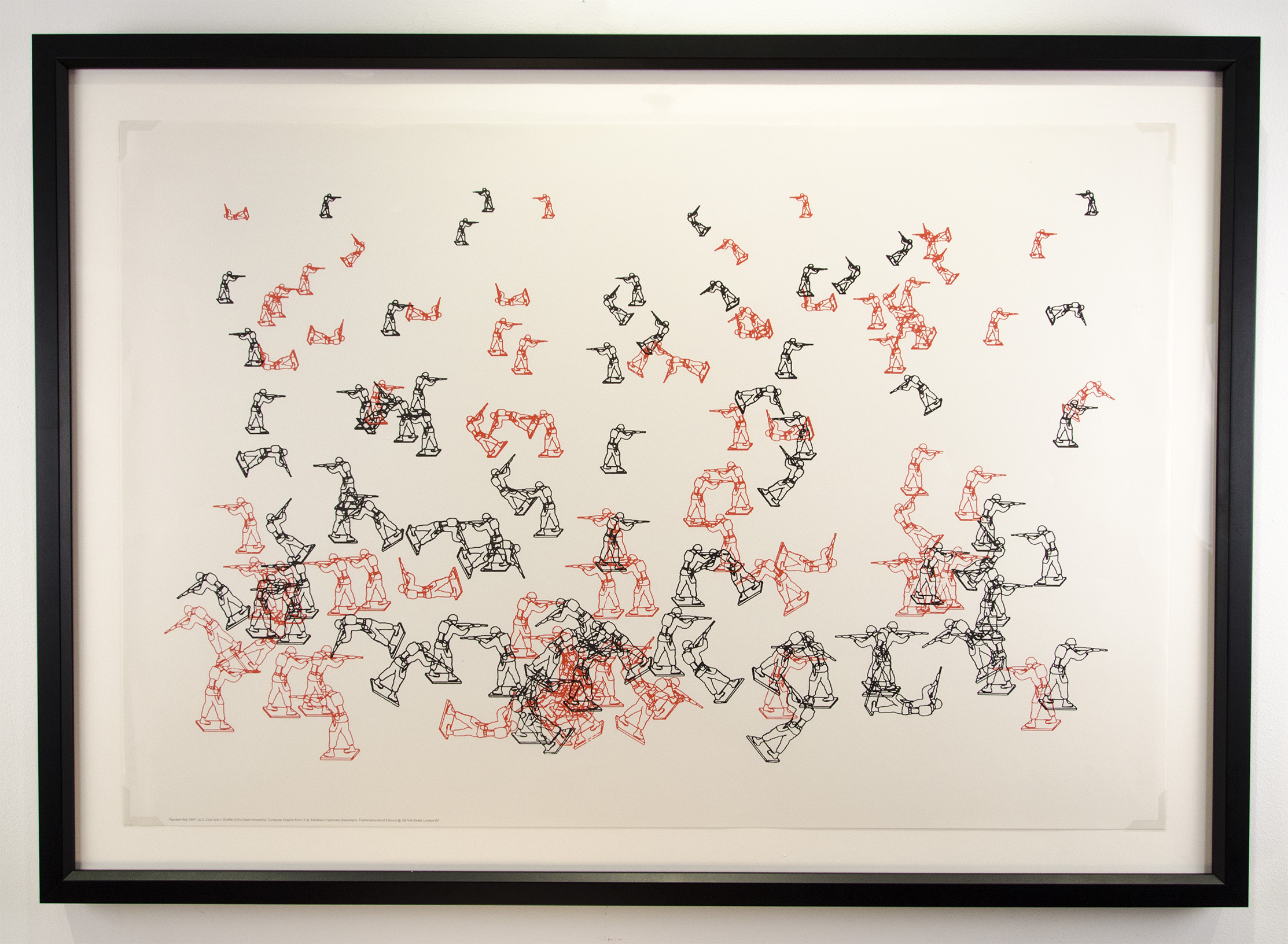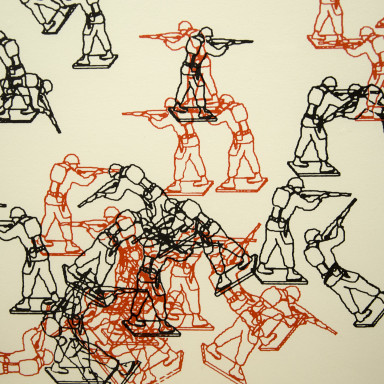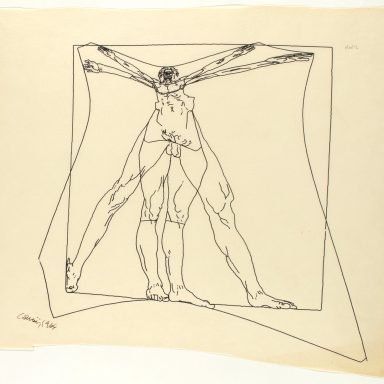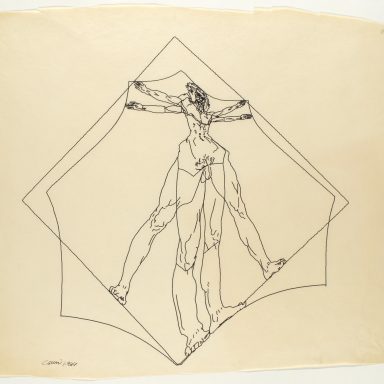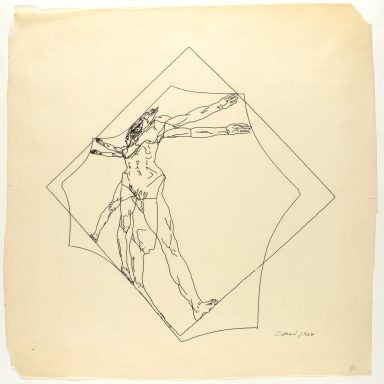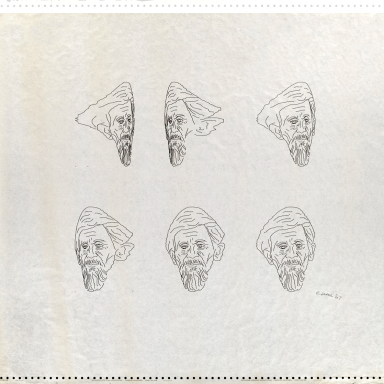Basic Information
Title: Random War
Artist(s):
Charles “Chuck” Csuri
James Shaffer
Date Created: 1969
Edition Info:
1 - from the complete set
2 - from the complete set
3 - from the set missing the colophon page and original box
4 - from the framed set
Framed Dimensions: 24.5 x 34.5 in.
Unframed Dimensions: 20 x 30 in.
Medium: lithograph on paper
Inventory ID: Csuri/Shaffer-1968-01 / Serendipity-1968-06
Description
from the Cybernetic Serendipity portfolio containing a colophon page and seven lithographs all after original unique computer-generated plotter drawings in a custom made box
printed and published by Motif Editions, London in 1968
artist’s names, title, dates, associated university/location, and publishing information printed along the lower left edge of the paper
artist’s were associated with Ohio State University
generated in 1967 at Ohio State University
hardware: IBM 7094
output machine: CALCOMP 565 drum plotter
text from the Cybernetic Serendipity colophon page:
The drawing was made of 1 toy soldier which provided data for the basic element of the composition. A random number generator was used in the program to determine The distribution and position of the soldiers on the battlefield. One side is red, and the other black, and the names of real people were given to each soldier. Are military ranks were assigned by the random number generator. The programme also had an automatic control for perspective.
A picture 30 X 100 inches of the battle was produced, and the printout gave the following information:
Total number of dead on each side
Total number of wounded on each side
The number of dead and wounded in each of 40 sectors of the battlefield
Identification of the dead and wounded in alphabetical order
The survivors in alphabetical order
Random War is an imaginary War, with few variables— but it is a short step to a real situation if 1 introduces more variables into the programme. One could introduce military Intelligence reports with an estimate of the enemy’s capabilities and the tactics they may employ. The computer can handle information about terrain, types and numbers of weapons, physical conditions of troops and so forth. The battle can be simulated on the computer, and computer generated film could give a visual display of the contest. Further decisions Could be made before the real battle begins. Once the real battle starts (one hopes that computer simulation would make such a step unnecessary) the computer could predict the outcome and its consequences many hours before the battle ends. The military computer could process one per cent of each of the variables and predict the outcome, much in the same way that national television computers have predicted the final results of political elections.

